
OCTOBER 2024 - JANUARY 2025




OCTOBER 2024 - JANUARY 2025





During October 20254 to January 2025 the SWT/KWS Sky Vet program was called to handle 35 wildlife cases involving 21 elephants, a cheetah, a leopard, a lion, a rhino, 2 zebra and 2 giraffes The cases were located all over Kenta, from the Tsavo and Amboseli ecosystem to the Laikipia region, Masai Mara and North and South Coast.
Out of the 35 cases, 20 were related to poaching, 3 for human-wildlife conflict, 11 for natural causes and 1 postmortem of a rhino. The human-wildlife cases involved the relocation of a problem lion that was preying on livestock, relocation of an elephant bull that killed one person and injured others and the treatment of an elephant with a spear injury likely caused during human-elephant interaction due to its proximity to local communities
The poaching cases included a leopard with a snare injury to its foot, 1 snared zebra and 1 arrowed zebra as well as 1 snared and 1 speared giraffe. 15 elephants were treated for poaching related injuries, 4 with snare wounds, 5 with spear wounds and 6 with arrow wounds. 2 of the elephants, both with spear wounds, were given a guarded prognosis whilst the others were all successfully treated and should make a full recovery.
Out of the all the cases there was a 86% success rate and only 2 deaths due to natural causes.
The Sky Vet program has deployed KWS vets to the following locations during this reporting period

October 2024 - January 2025
Outcomes of Cases Attended
October

Elephant Spear Gonzani Area, Kwale
This adult elephant bull was seen limping by a SWT/KWS De-snaring Unit in the area. He had a swollen left forelimb.
Immobilisation, examination and treatment
The elephant was darted from a helicopter and successfully immobilized with 20mg Etorphine hydrochloride delivered remotely in a 3cc Dan inject dart. It took 7 minutes for the drug to take effect.
Examination revealed a deep wound on the elbow of the left forelimb, the wound was suspected to have been inflicted by a spear that also hit the bone and joint. The wound was thoroughly cleaned and debrided, flushed with Hydrogen peroxide, rinsed with water, and infused with tincture of Iodine. Antibiotic pessaries were thereafter introduced into the wound and antibiotic spray applied topically. Furthermore, the bull was given antibiotics and anti-inflammatories parenterally. Anaesthesia was reversed with 200mg Naltrexone given intravenously via a prominent ear vein. He rose and slowly walked away 3 minutes later.
Prognosis
The elephant bull has a poor to guarded prognosis.
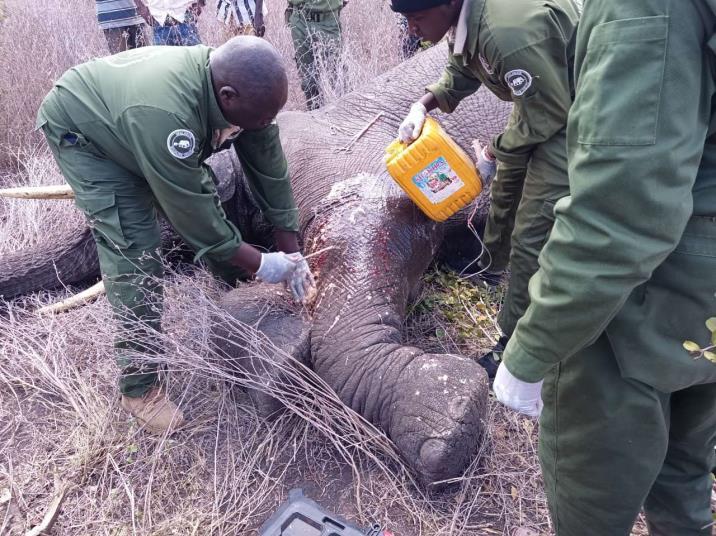
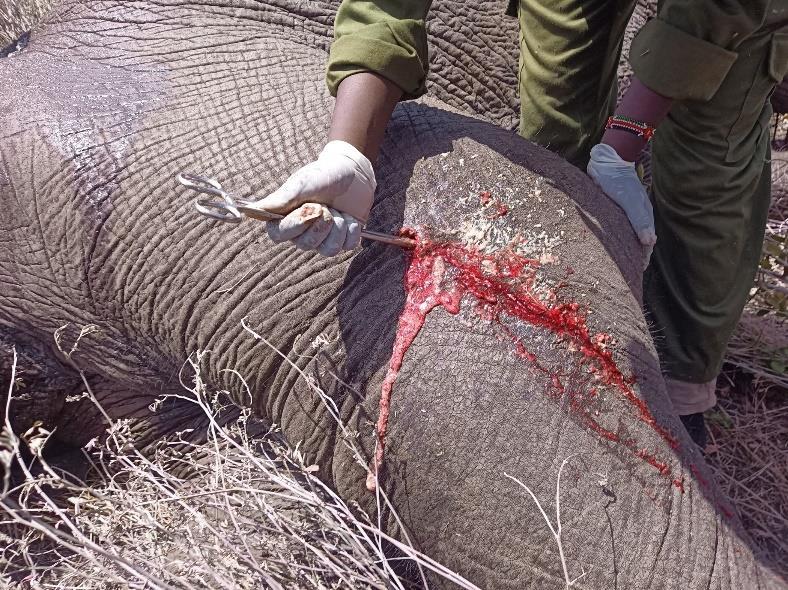

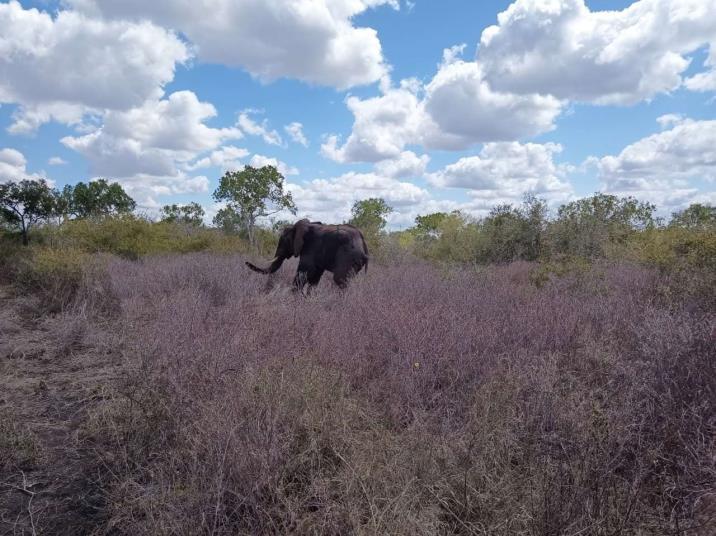
This injured adult elephant bull was spotted by a SWT pilot during routine patrols. He had a wound on the proximal right forelimb.
Immobilisation, examination and treatment
The bull was successfully immobilized with 18mg Etorphine hydrochloride delivered remotely in a 3cc Dan inject dart. Darting was done from the helicopter, and it took 8 minutes for full anaesthesia to be achieved.
Examination revealed a deep wound on the proximal right forelimb slightly below the shoulder that was suspected to be a spear wound. The wound was thoroughly cleaned, flushed with Hydrogen peroxide, rinsed with water, and infused with tincture of Iodine solution, packed with antibiotic pessaries and covered with topical antibiotic spray. Additionally, Amoxicillin antibiotics and Flunixin anti-inflammatory medication was administered parenterally. Anaesthesia was reversed with 250mg Naltrexone hydrochloride given intravenously via a prominent ear vein. The bull stood 2 minutes later.
The elephant bull has a good prognosis.
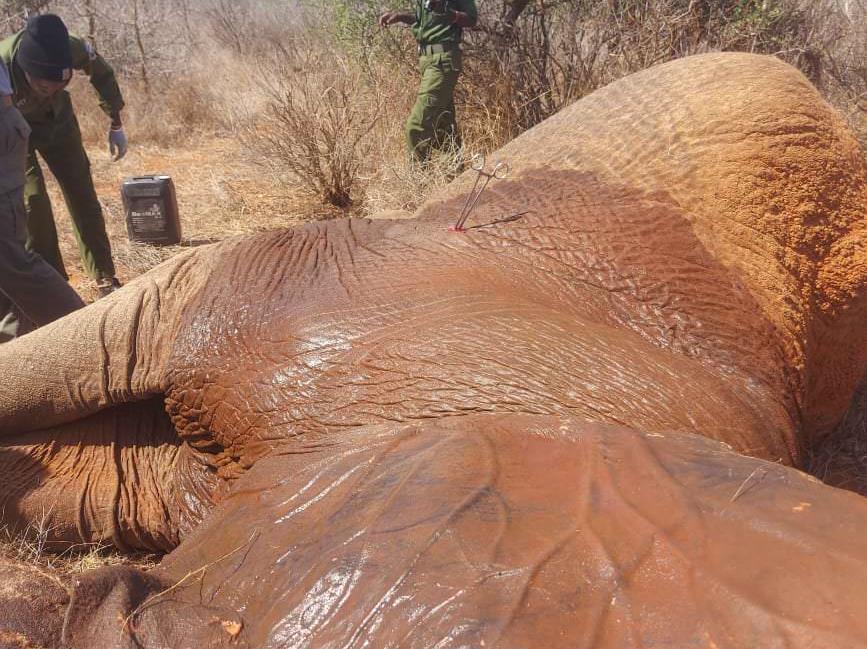
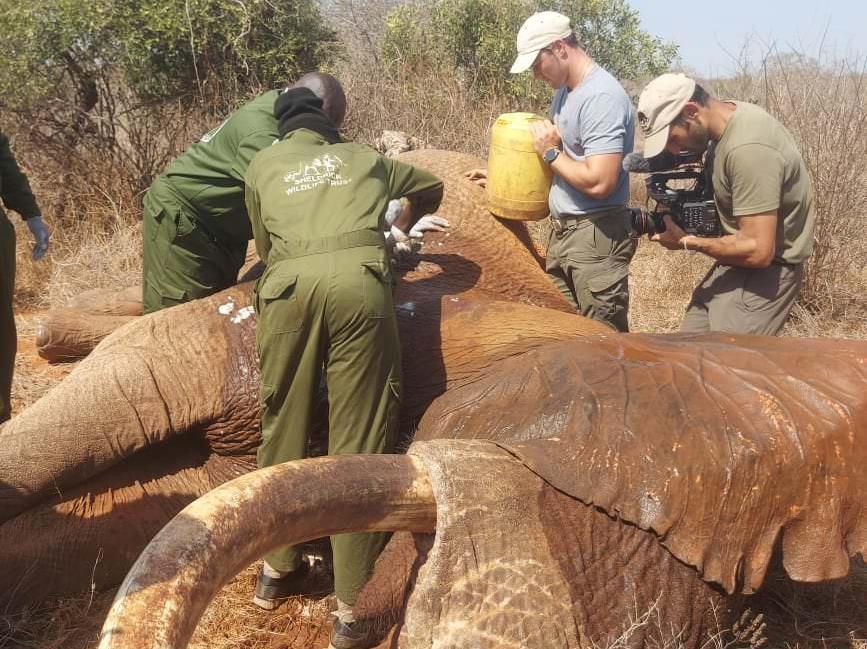


Elephant Snared Mbulia, Tsavo
A SWT/KWS De-snaring Unit spotted this adult elephant bull dragging a wire snare secured on his right hindlimb.
Immobilisation, examination and treatment
The elephant was darted from a helicopter and immobilized successfully with 17mg Etorphine hydrochloride delivered remotely in a 3cc Dan inject dart. It took 9 minutes for full anaesthesia to be achieved.
Examination revealed a winch wire snare bound on the right hind limb at the tarsus level. Luckily, the snare had not inflicted any injuries on the limb.
The snare was immediately cut loose using wire cutters then anaesthesia was reversed with 200mg Naltrexone hydrochloride given intravenously via a prominent ear vein. He stood 3 minutes later and hastily walked away.
Prognosis
The elephant bull has a good prognosis

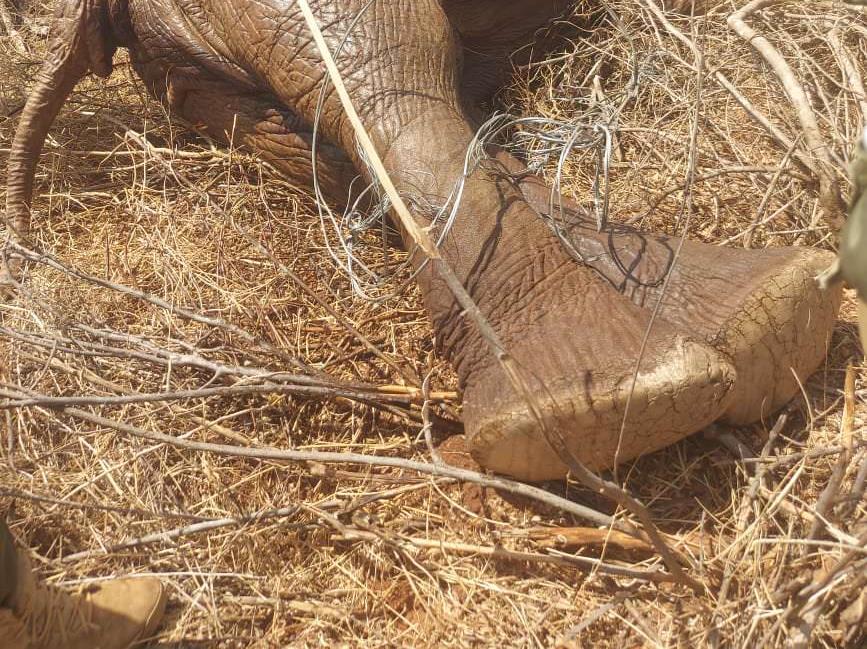
This injured adult elephant bull was spotted by a SWT pilot during routine patrols in the park. The animal had a wound on the left flank.


Immobilisation, examination and treatment
The elephant bull was successfully immobilized with 20mg Naltrexone hydrochloride delivered remotely in a 3cc Dan inject dart. Darting was done from the helicopter, and it took 9 minutes for the drug to take effect Examination revealed an arrow wound on the left flank that was oozing pus, the wound was beginning to heal and had formed fibrous tissue around it. Additionally, another arrow wound was observed on the left rump, it was also oozing pus. Both wounds were thoroughly cleaned and debrided, flushed with Hydrogen peroxide, rinsed with clean water, and infused with tincture of Iodine. The wounds were thereafter packed with antibiotic pessaries and topical antibiotic spray applied. Additionally, the bull received Amoxicillin antibiotics and Flunixin anti-inflammatories parenterally. Anaesthesia was reversed with 250mg Naltrexone hydrochloride given intravenously via a prominent ear vein
Prognosis
The elephant bull stood and slowly walked away to join his herd waiting nearby. He has a good prognosis.

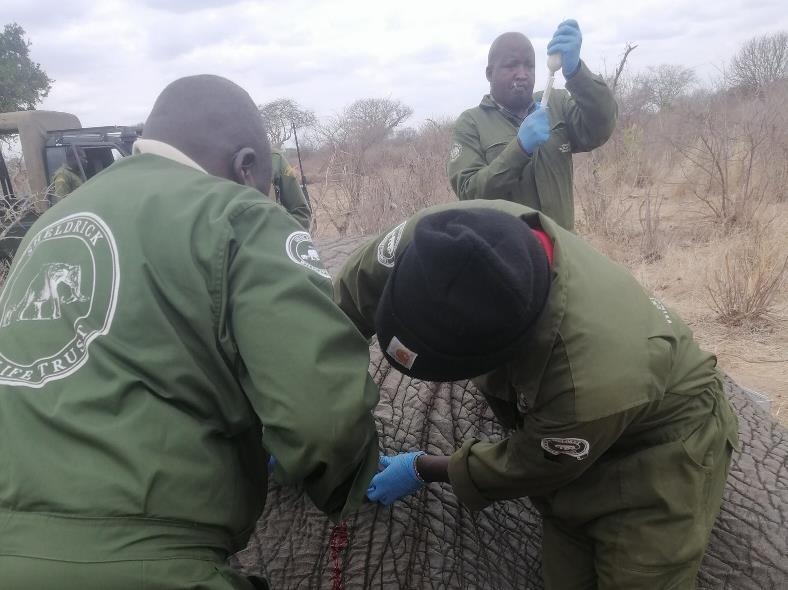
This injured elephant bull was spotted in the vicinity of Tsavo West NP near Kamboyo headquarters. It seemed he had recently arrived from an unknown location bearing a wound on his right flank.
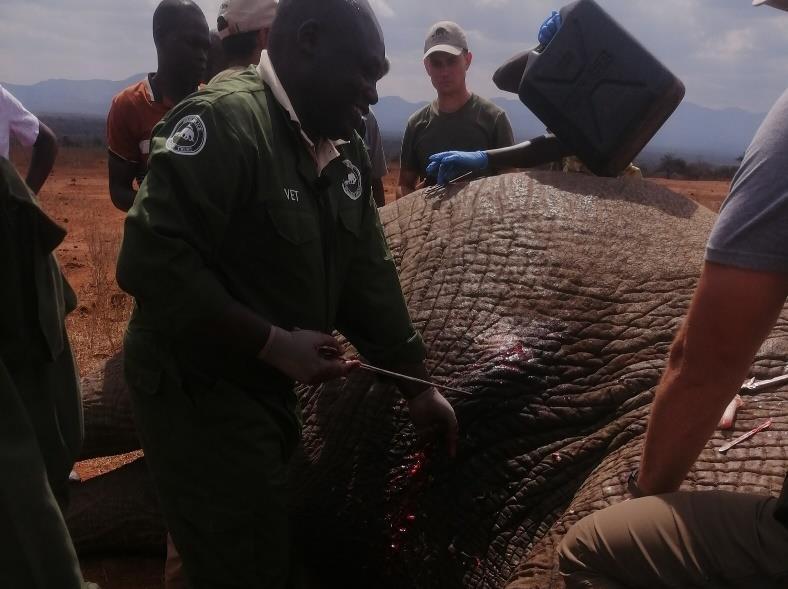

The elephant bull was darted from a helicopter and successfully immobilized with 20mg Etorphine hydrochloride. It took 10 minutes for full anaesthesia to be achieved. Examination revealed a wound that was oozing pus on the distal right flank. On probing the wound, a foreign object was felt within the wound An incision was made at the edge of the wound to give access to the foreign body. Two fragments that were positively identified to be parts of an arrowhead were extracted from the wound. The wound was thereafter thoroughly cleaned, debrided, flushed with Hydrogen peroxide, rinsed with water, infused with tincture of Iodine, packed with antibiotic pessaries, and antibiotic spray applied topically. Additionally, antibiotics and anti-inflammatories were administered parenterally. Anaesthesia was reversed with 200mg Naltrexone hydrochloride given intravenously via a prominent ear vein.
The elephant bull has a good prognosis.
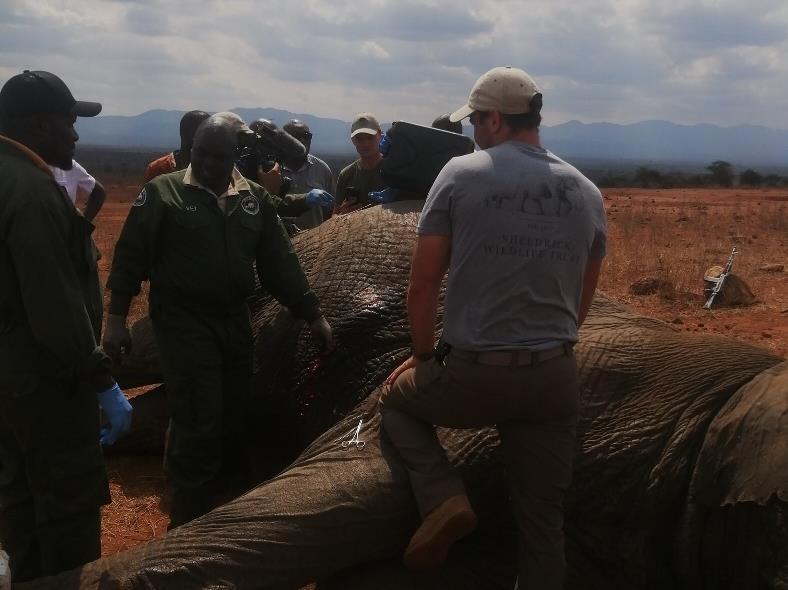
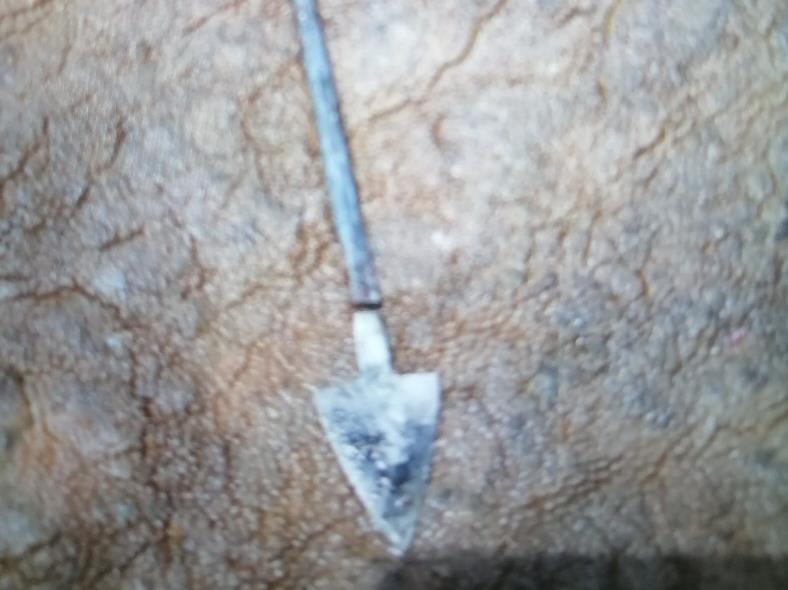
This injured adult elephant bull was spotted by a SWT pilot during routine patrols, he had 2 wounds. One was on the left flank while the other was on the right rump area.
The elephant bull was successfully immobilized with 21mg Etorphine hydrochloride delivered in a 3cc Dan inject dart. Darting was done from the helicopter, and it took 9 minutes for the drug to achieve full effect.
Examination revealed 2 arrow wounds oozing pus, one was on the left chest area while the other was on the right rump area. Both wounds were thoroughly cleaned, debrided and flushed with Hydrogen peroxide. They were then rinsed with water, infused with tincture of Iodine, and covered with a topical antibiotic spray. Additionally, antibiotics and anti-inflammatories were administered parenterally. Anaesthesia was reversed with 200mg Naltrexone hydrochloride given intravenously via a prominent ear vein. The bull stood 3 minutes later and hastily walked away
The elephant bull has a good prognosis.
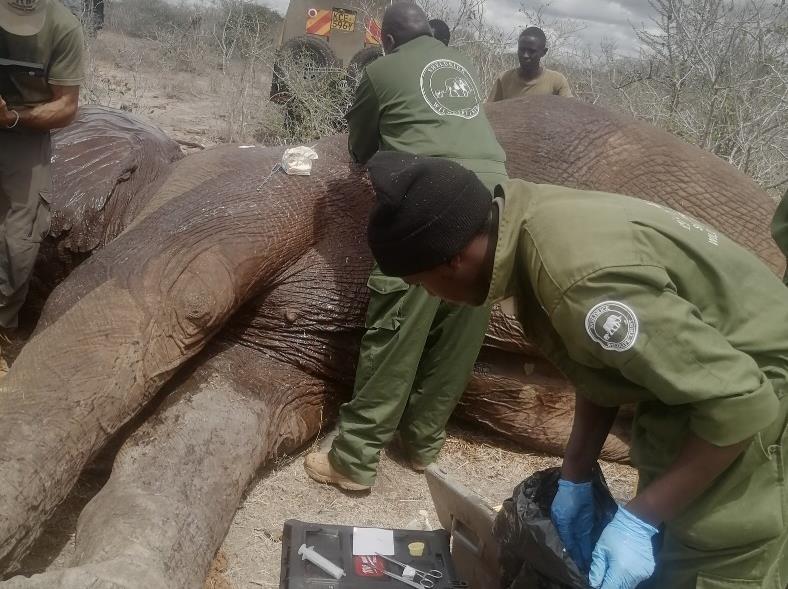

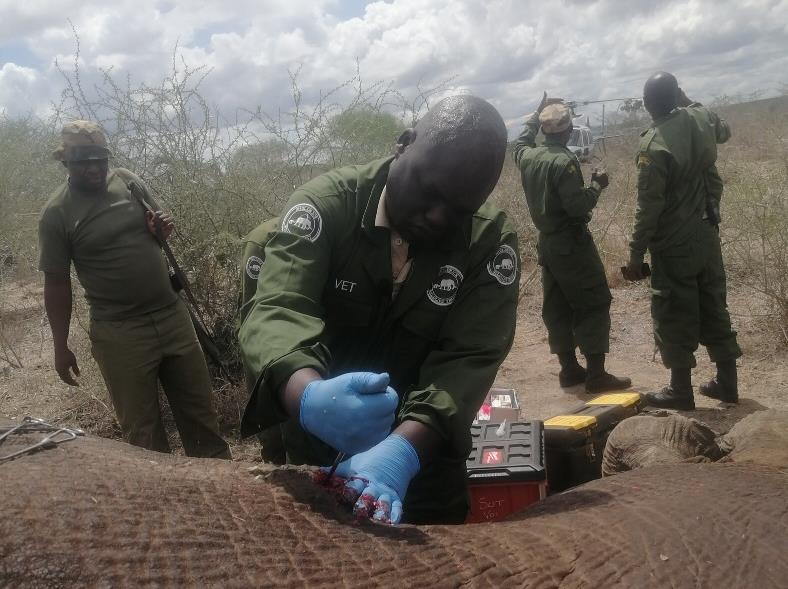

This injured elephant was spotted by the SWT pilot during routine patrols he had a wound on right flank. TMVU was notified and responded immediately to attend to the elephant.
Immobilisation, examination and treatment
He was successfully anesthetized from a helicopter using 20mg of Etorphine hydrochloride delivered remotely in a 3cc Dan inject dart. It took 8 minutes for full anaesthesia to be achieved.
Examination revealed a deep arrow wound on his right flank The wound was oozing pus and on probing the wound a foreign body was felt within the wound. On retrieval the foreign body was positively identified to be an arrowhead. The wound was thereafter thoroughly cleaned, debrided and disinfected using tincture of Iodine. Antibiotic pessaries were introduced into the wound followed by topical antibiotic spray. He was additionally given Amoxicillin antibiotics and Flunixin anti-inflammatories parenterally.
Revival and prognosis
He was revived from anaesthesia using 200mg Naltrexone hydrochloride given intravenously via a prominent ear vein, he rose 3 minutes later and slowly walked away with a good prognosis.
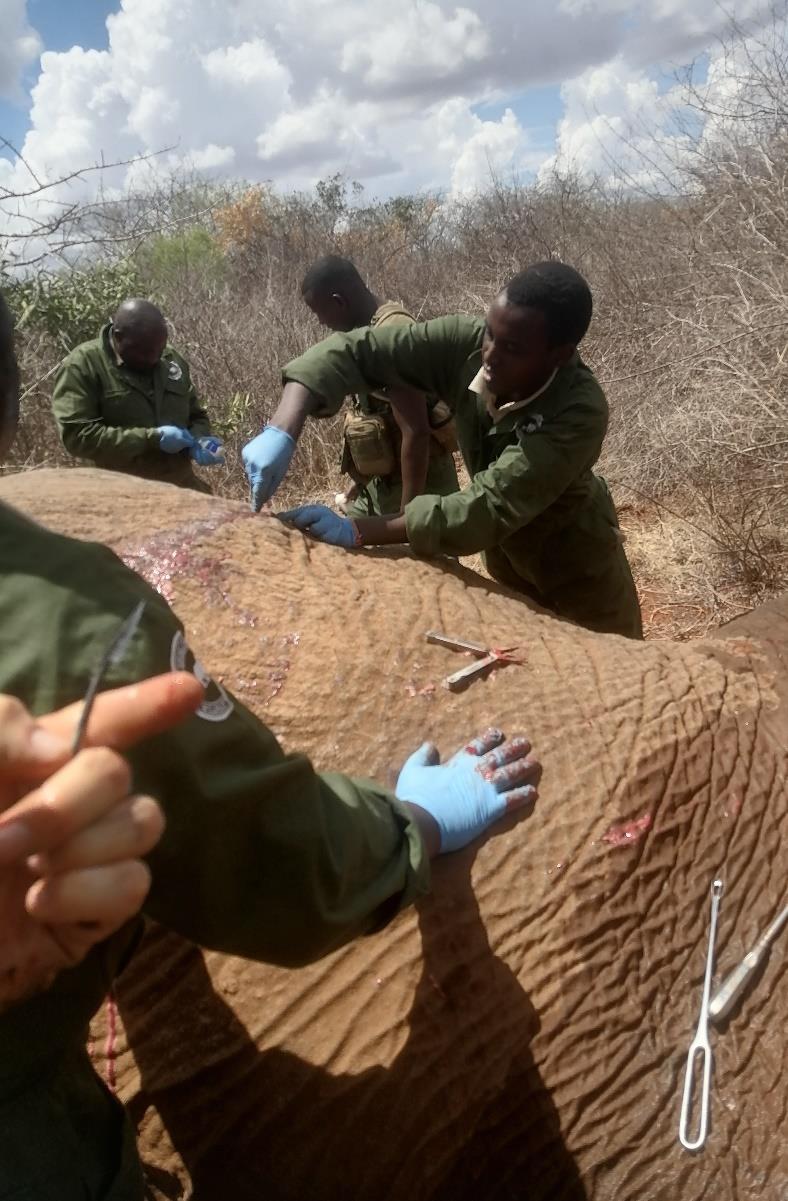

This calf was spotted by staff at the Teita Sisal Ranch he had a thick wire snare bound tightly around his neck. This was reported to TMVU who responded to attend to the calf.

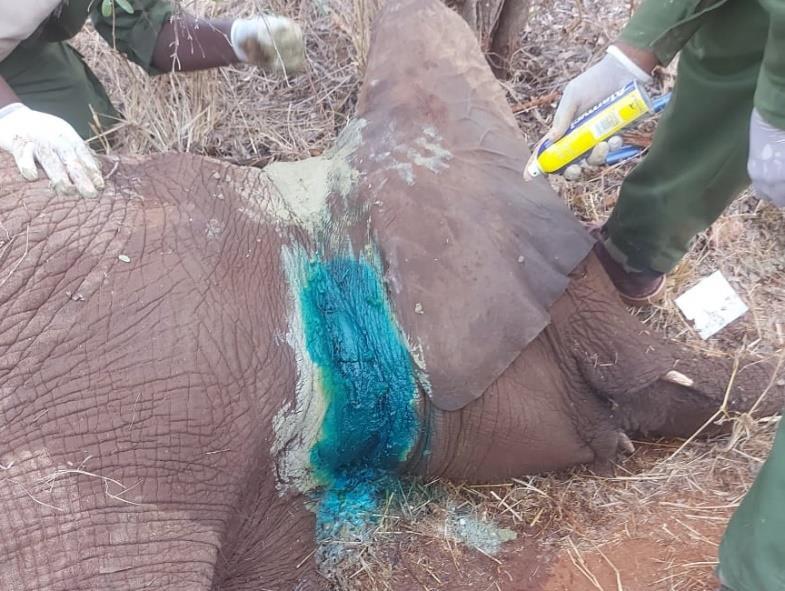
Immobilisation, examination and treatment
The calf and his mother were both immobilized successfully using 3mg and 17mg of Etorphine hydrochloride respectively. Darting was done from the helicopter for the mother and from foot for the calf. It took 7 and 8 minutes respectively for full anaesthesia to be achieved.
Examination revealed a winch wire snare tightly bound round the neck of the calf inflicting a deep wound. The wound was debrided, cleaned thoroughly, flushed with Hydrogen peroxide, rinsed with clean water and infused with tincture of Iodine. Green clay was thereafter packed in the wound followed by topical antibiotic spray. He additionally was given Amoxicillin antibiotics and Flunixin anti-inflammatories.
Reversal and Prognosis
They were both revived simultaneously using 70mg and 200mg Naltrexone given intravenously via prominent ear veins. They both rose and walked away together 3 minutes later. Prognosis is good.
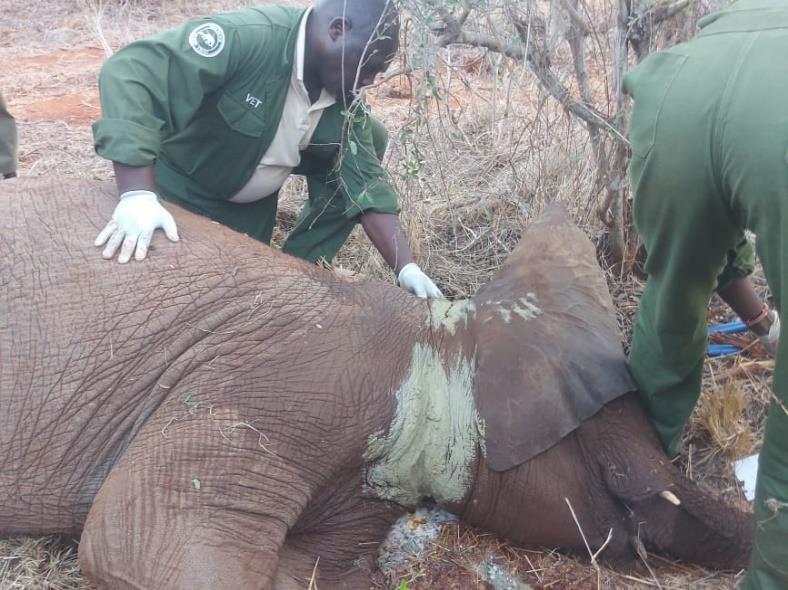

This injured bull was spotted in Amboseli by the KWS teams at the area with a spear in-situ on the left flank. TMVU was notified and airlifted to attend to the giraffe.
Immobilisation, examination and treatment
He was successfully immobilized using a combination of 14mg Etorphine hydrochloride and 60mg Azaperone delivered remotely in a 3cc Dan inject dart. Darting was done from the vehicle, and it took 12 minutes for the drugs to achieve its full effects.
Examination revealed a spear lodged deep into the flank area, the spear was immediately retrieved. The wound was thereafter cleaned with normal saline, disinfected and topical antibiotic spray applied.
He additionally was given antibiotics and anti-inflammatory medication parentally.
Prognosis
The prognosis is poor to guarded. There will be chances of severe peritonitis from the seeping ingesta which is almost always fatal.
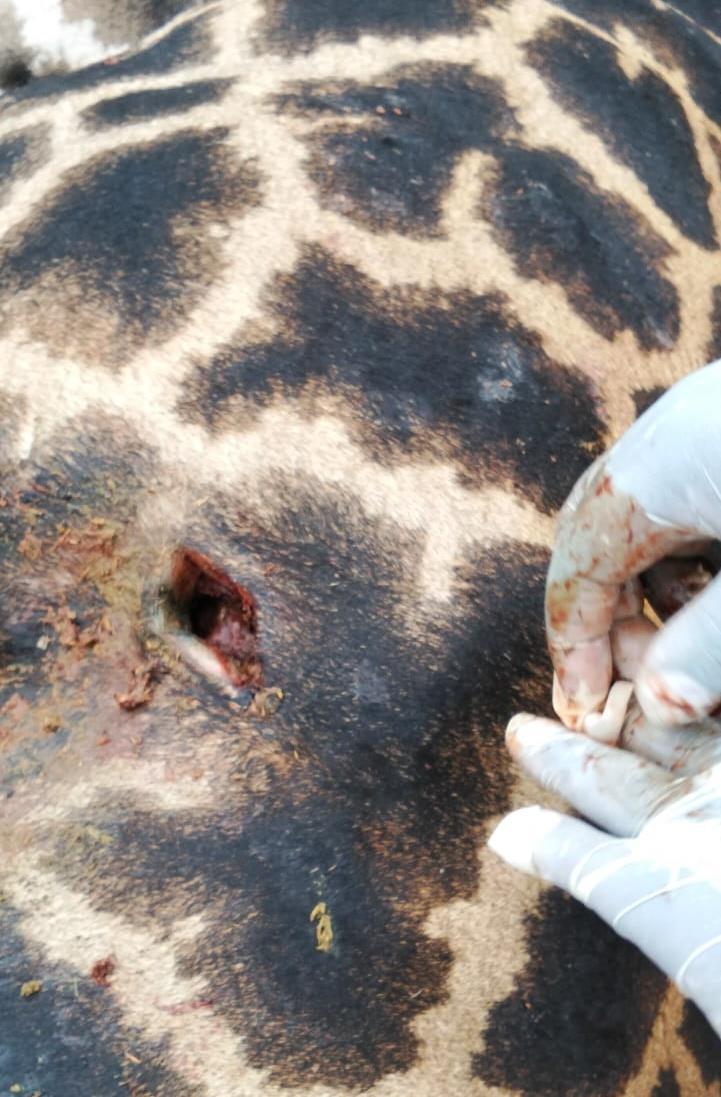
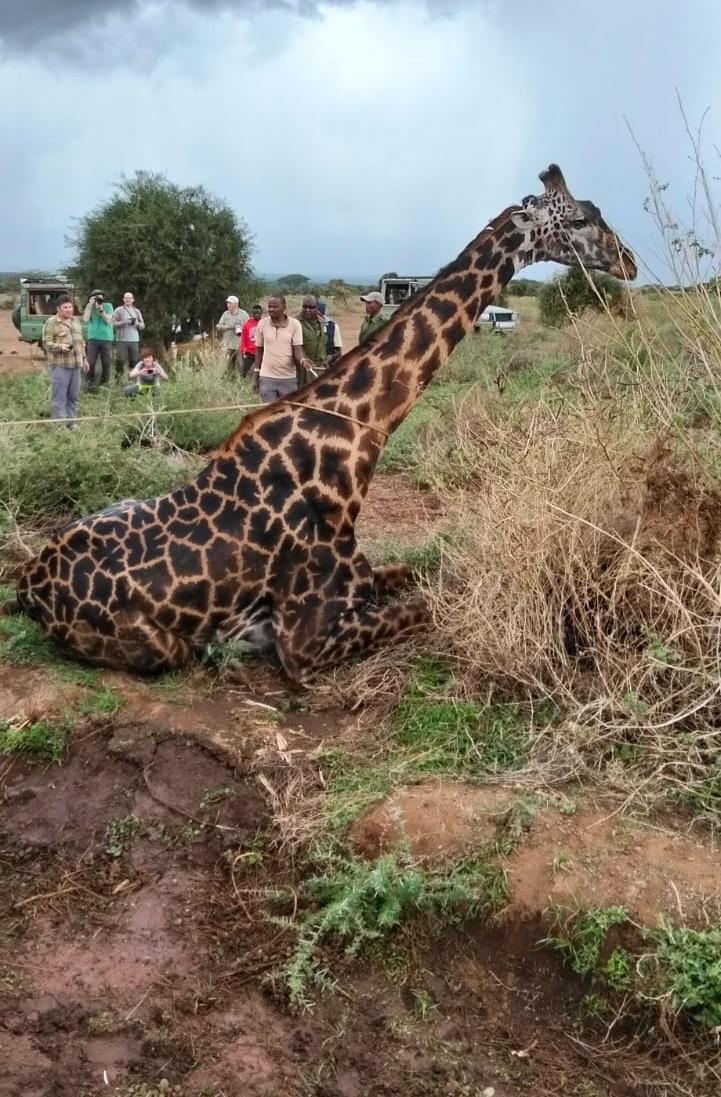
One BLF rangers reported an injured cheetah to AMVU. The vet was airlifted from Voi to Chyulu for the cheetah treatment. A vehicle was additionally used to assist in the darting of the injured cheetah.
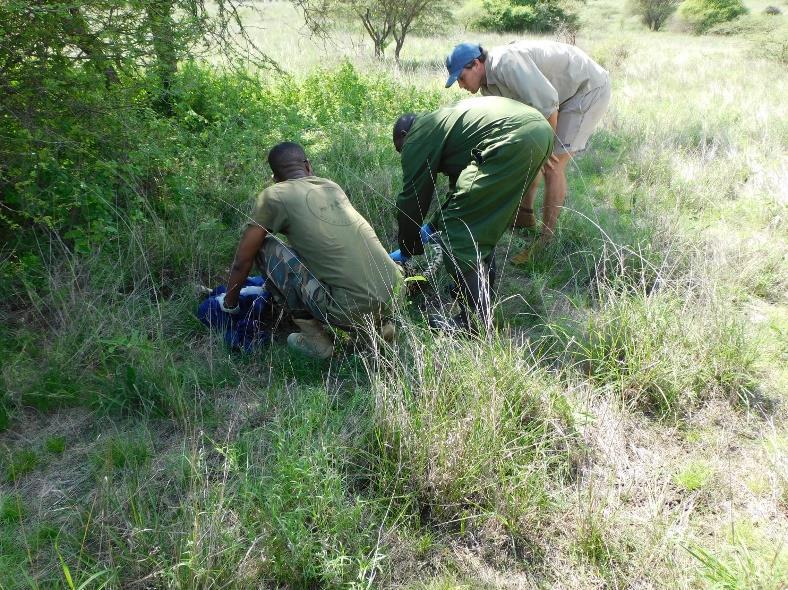
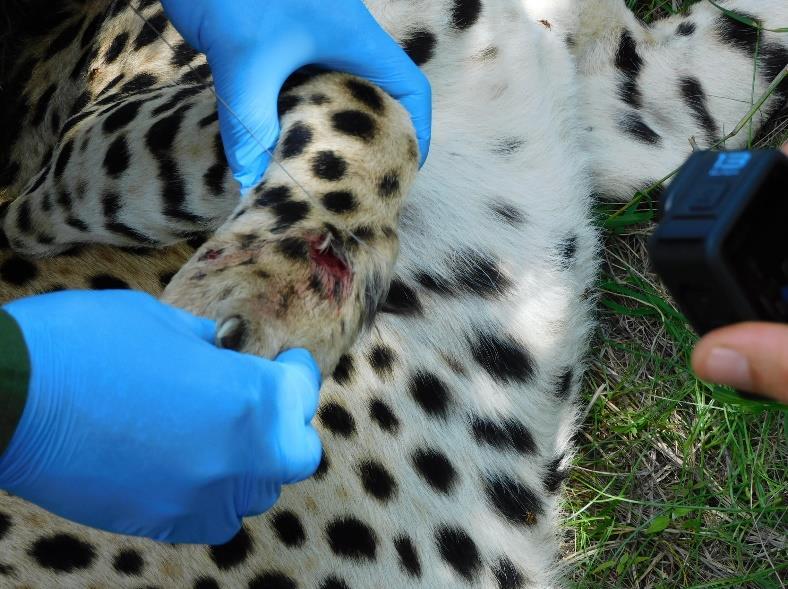
Immobilisation, examination and treatment
The cheetah was found under an acacia tree and darted from a vehicle. The cat was successfully immobilized using a combination of 120mg of Ketamine HCl and 6mg of Medetomidine.
The cheetah had a tear wound on the paw and a smaller one along the spine. The wounds resulted from a territorial fight with other males. The wound was irrigated with Iodine solution. Amoxicillin injection and Oxytetracycline spray were applied to cover for bacterial infection.
Revival and prognosis
The cheetah was revived using Atipemazole (an antagonist for the immobilisation drug) and favourably woke up after drug administration. Prognosis is good.


A report was made to AMVU by the Assistant Director-Tsavo West National Park after discovering a rhino carcass within Ngulia Rhino Sanctuary. A request was made to determine the cause of the rhino’s death.
The rhino carcass was identified as Bill, a 45-year-old male. The carcass tissue was relatively fresh and had no flies on it. The carcass was opened on the left lateral flank up to the scapula area. All internal organs were exteriorized and studied for pathology.
The large intestine contained well-formed but hard faecal balls The caecum looked normal but had no contents apart from air. The small intestine had a slight haemorrhagic condition but was empty and had no fluids or ingesta. The stomach was full and felt hard on finger press. The stomach contents were dry and decomposed. The gastric wall was eroded and had a massive ulcer
Cause of death
The rhino died of complications following gastric impaction. Impaction likely resulted from abrupt diet change and is plausible with recent weather change. The gastric ulcer is likely to have complicated the digestive problem following diet changes.

This snared giraffe was spotted by the KWS/SWT team in the area. She had a wire snare bound around her neck.
Immobilisation, examination and treatment
This giraffe was successfully immobilized using a combination of 14mg of Etorphine hydrochloride and 60mg Azaperone delivered remotely in a 3cc Dan inject dart. Darting was done from the helicopter, and it took 8 minutes for the dugs to achieve its full effects.
Examination revealed a thick winch wire snare around the neck of the giraffe, luckily the snare had not inflicted any injuries. The snare was cut immediately using wire cutters.
Prognosis
She was reversed from anaesthesia using 150mg of Naltrexone hydrochloride delivered intravenously via the jugular vein. She rose and hastily walked away 3 minutes later.


Case 13 – 17th December 2024
This injured elephant was found in lateral recumbency by the KWS team in the area. He had fallen on a fence and was unable to rise on his own. He had been treated twice before for fight wounds. He was reported to have been recumbent for more than 18 hours.
Examination and treatment
Examination revealed that this bull had a deep fight wound on the posterior proximal right thigh and another septic wound on the medial thigh of the left hind limb. Both wounds were oozing pus. The wounds were thoroughly cleaned and disinfected then packed with antibiotic pessaries and topical antibiotic spray applied.
He additionally was given Amoxicillin antibiotics parenterally and intravenous fluids.
Prognosis
He unfortunately succumbed to septic shock from the septic fight wounds.

Mara Mara vet attended to a male lion aged about 3.5 yrs who had suffered from injuries resulting from a territorial fight. The injuries were on both flanks and spinal region. They were infected and had pus.
Immobilisation, examination and treatment
A retreat was made to prepare a dart comprising of 300mgs Ketamine and 4mgs Medetomidine. The lion was approached with a vehicle and darted successfully. It made no effort to disappear but relaxed and was completely sedated in ten minutes, then blindfolded and moved to the shade of the vehicle.
The deep infected injury on the rear spinal region was cleaned with water, Hydrogen peroxide and Iodine. Amoxicillin 15,000mg was administered directly into the wound followed by Tetracycline (Alamycin) wound spray. Systemically it was injected with 15,000mgs Amoxicillin and 30mgs Dexamethasone into different muscle sites. For internal/external parasites it was injected with 40mgs Ivermectin under the skin.
The anaesthetic was reversed 1 hour post immobilization by injecting 20mgs Atipamezole intra-muscularly. He showed signs of palpebral reflex and ear twitching after half an hour then got 15 minutes later. He joined and left with her pride one hour post revival. Prognosis is good and the lion will be monitored.



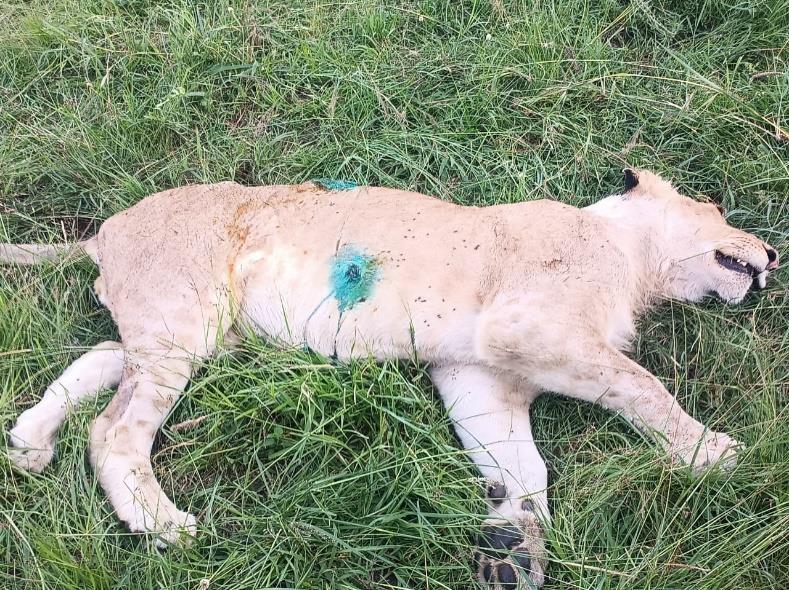
Mara vet attended to an elephant bull with a heavy swelling on the right fore limb in Mara Triangle. The elephant could hardly move immobilization was done and a physical examination carried out.
Immobilisation, examination and treatment
A dart was prepared, and he was successfully darted from a helicopter on the hind quarters with 17mgs Etorphine. After ten minutes, the elephant stopped moving and swayed from side to side. Eventually, he was brought down onto sternal recumbence then onto its side using manpower and ropes. Both ears were used to cover the left and right eye shielding it from direct sunlight and dust. Water was doused on the animal to cool him down as the temperatures continued rising.
No physical injury was observed. It was given 30,000mg Oxytetracycline and 50mgs Dexamethasone, administered intramuscularly. Most probable cause is a fall causing muscle and tissue injury.
Reversal and prognosis
It was revived using 170mgs Naltrexone into the ear vein and a third of the drug intramuscularly. Prognosis is good. Monitoring of the elephant will be done by Mara Triangle Rangers.


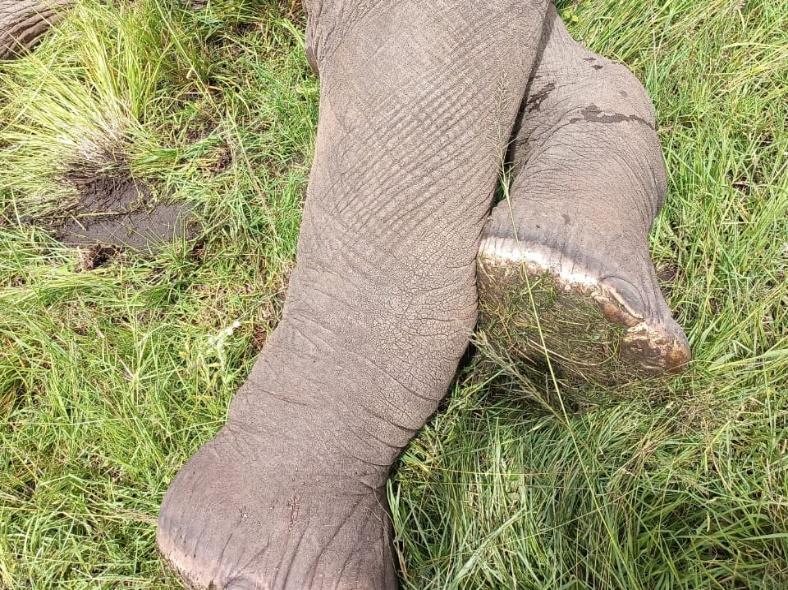

Mara vet attended to an injured male elephant in Mara North. It was observed to have 3 arrow injuries on the right forelimb around the shoulder joint and spinal region.
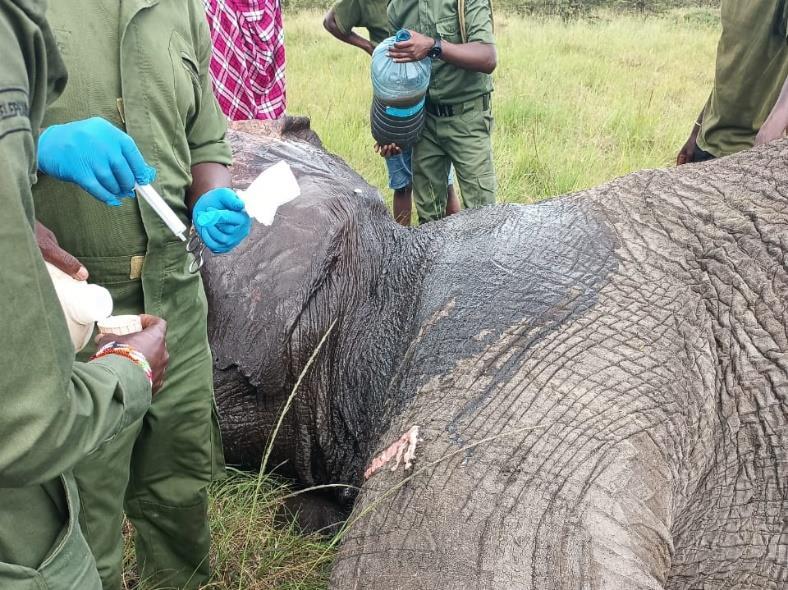

The elephant was darted from a helicopter in the hind quarters with 17mgs Etorphine. After 10 minutes the elephant was assisted to the ground by the Ground Teams then both ears were used to cover the left and right eye, shielding it from direct sunlight and dust. Water was doused on the animal to cool him down as the temperatures continued rising.
A swelling adjacent to the wound was incised so the pus could be drained out. The wounds were cleaned with water, then cauterized with Hydrogen peroxide and lavaged with povidone Iodine. Topical antibiotic cream and spray was also applied. Systemically the elephant was given 30,000mg Oxytetracycline and 50mgs Dexamethasone was administered intramuscularly.
It was revived using 170mgs Naltrexone The prognosis is good, and monitoring continues


Mara vet attended to a juvenile female elephant with a spear injury on the left hock in Enonkishu Conservancy.
Immobilisation, examination and treatment
A dart was prepared, and the elephant was successfully darted from foot on the hind quarters with 14mgs Etorphine. The elephant went down after 10 minutes and both ears were used to cover the left and right eye shielding it from direct sunlight and dust.
The wounds were cleaned with water then cauterised with Hydrogen peroxide and lavaged with Iodine.
Topical antibiotic cream and spray was applied. Systemically the elephant was given 30,000mg Oxytetracycline and 50mgs Dexamethasone was administered intramuscularly.
Prognosis
Prognosis for full recovery is good.
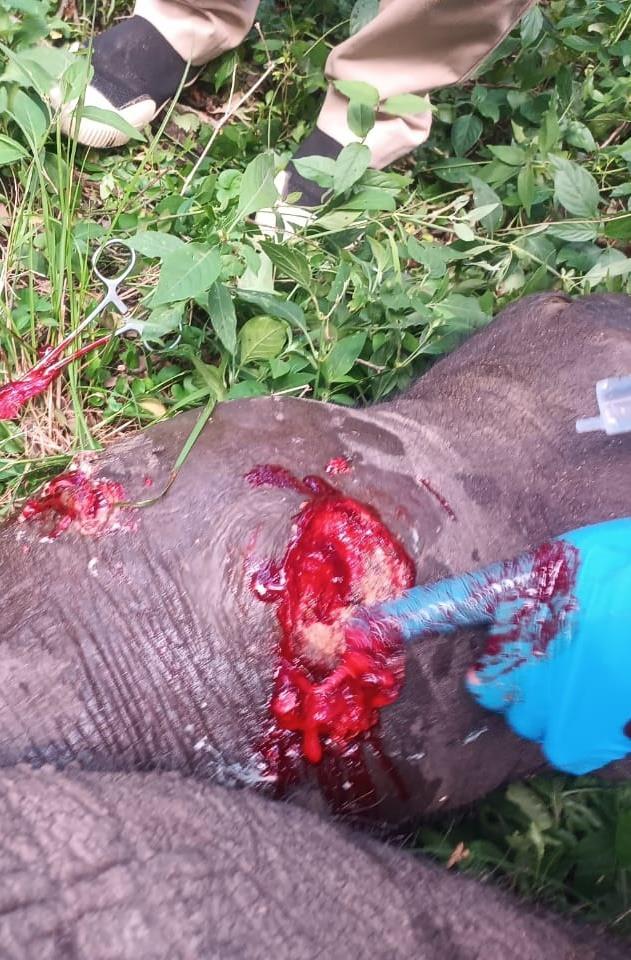

The Mara Vet attended an injured lion at Lemek conservancy. The lion had previously sustained serious tail injuries and was now observed to have a heavily infected wound with maggots.
Once the lion was located a retreat was made to prepare a dart comprising of 300mgs Ketamine and 4mgs Medetomidine. It was approached with a vehicle and darted successfully in the pelvic muscle. He was completely sedated in ten minutes assuming sternal recumbence. He was then blindfolded and moved to the shade of the vehicle on left recumbence.
The wounds were debrided and cleaned with water, Hydrogen peroxide and finally Iodine 15,000mg of Amoxicillin was administered into the wound followed by Tetracycline (Alamycin) wound spray. Systemically it was injected with 15,000mgs Amoxicillin and 30mgs Dexamethasone into different muscle sites. For internal and external parasites, he was injected with 40mgs Ivermectin under the skin
Prognosis
The anaesthetic was reversed one hour post immobilization. He got into sternal recumbence after forty-five minutes and started walking away one hour post revival. Prognosis is good but monitoring is advised.




Cheetah Natural Causes Masai Mara National Reserve
Mara vet attended to an injured heavily limping female cheetah. This could have occurred during hunting. The nursing cheetah needed the treatment as she is the one who hunts for her cubs. The lameness had rendered her immobile.
Examination and treatment
The cheetah did not require immobilisation so could be treated remotely.
The cheetah was darted with 2 vials of Meloxicam to ease the pain and prevent her from getting arthritis.
Prognosis
Prognosis for recovery is good, but monitoring is advised in case there is a need for follow up.
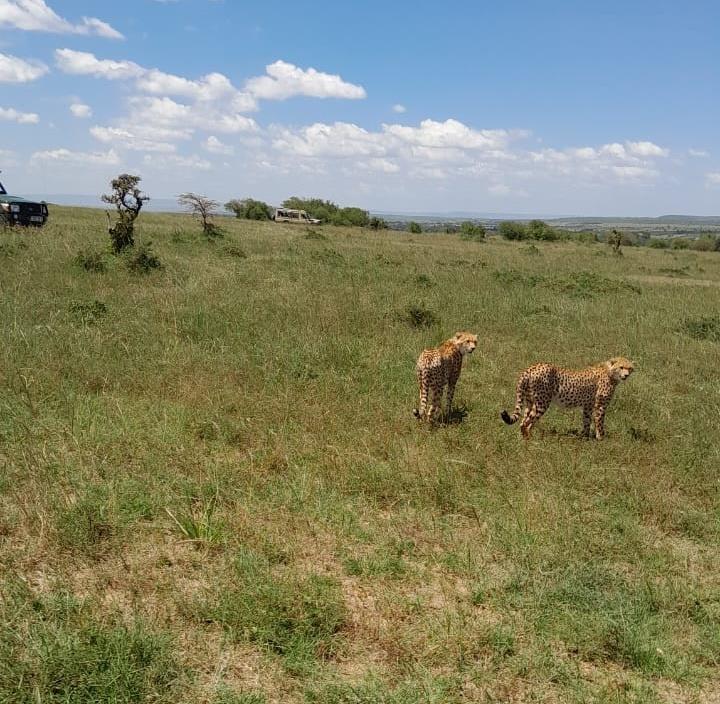
Mara vet attended to an injured lion in Mara. The lion had a cut on the left hind limb.
Immobilisation, examination and treatment
The lion was approached with a vehicle and darted with 300mgs Ketamine and 4mgs She was completely sedated in ten minutes assuming sternal recumbence. She was blindfolded and moved to the vehicle shade on left recumbence.
The deep infected injury was cleaned with water, Hydrogen peroxide and povidone Iodine. 15,000mg of Amoxicillin was injected into the wound followed by Tetracycline (Alamycin) wound spray. Systemically the lion was injected with 15,000mgs Amoxicillin and 30mgs Dexamethasone into different muscle sites. For internal and external parasites, she was injected with 40mgs Ivermectin under the skin.
Prognosis
The anaesthetic was reversed with 20mgs Atipamezole intra-muscularly. She started walking away one hour post revival and she was left in company of the pride. Prognosis is good.

Cheetah Natural Causes Masai Mara National Reserve
Mara vet attended to an injured heavily limping female cheetah.
Examination and treatment
The cheetah did not require immobilisation so could be treated remotely.
15,000mg Amoxicillin was delivered via a dart gun.
Prognosis
The cubs are healthy and well fed. Prognosis for recovery is good, but monitoring is advised.
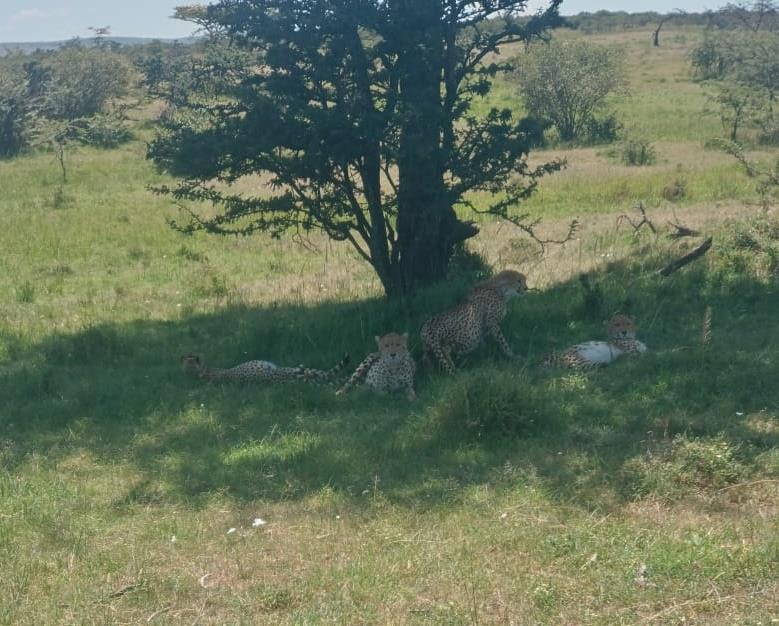
A juvenile lion from Rongai pride was attacked by Kissinger pride. The lion suffered from injuries to the head and limbs.
Treatment
The lion was treated remotely by administration of 15,000mg Amoxicillin (antibiotics) and 50mg Dexamethasone (ant-inflammatories) via a dart gun
Prognosis
Rangers will continue monitoring but the prognosis is good.

23 – 6th January 2025
Elephant Speared
The Mara vet attended to a speared male elephant in Mara North. There was a physical swelling on the right hind limb and spear injuries with pus on the tail and spinal regions.
Immobilisation, examination and treatment
The elephant was darted from a helicopter in the hind quarters with 17mgs Etorphine. Once the elephant was immobile, the ground teams assisted the elephant to the ground on lateral recumbency.
All the wounds were cleaned with water, then cauterized with Hydrogen peroxide and lavaged with povidone Iodine. Topical antibiotic cream and spray was applied. Systemically the elephant was given 30,000mg of Oxytetracycline and 50mgs Dexamethasone administered intramuscularly.
Prognosis
It was revived using 170mgs Naltrexone into the ear vein and a third of the drug intramuscularly. Prognosis is good. Monitoring of the elephant will be done by Mara North rangers.


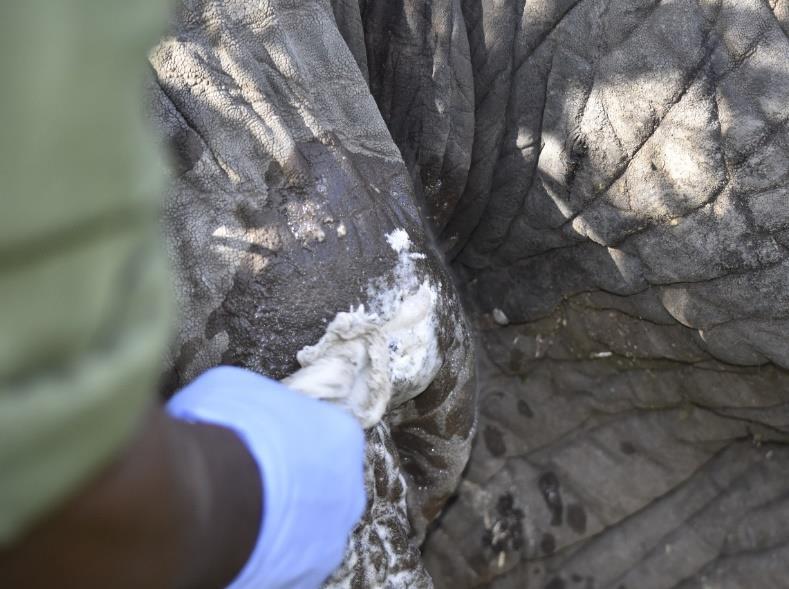

This male elephant was sighted from foot by the Veterinary and patrol teams. The left hind limb was slightly swollen.
Examination
The elephant had no physical external injury. He was aggressive and charged at the veterinary team several times so he could not safely be immobilised and treated
The elephant’s gait was fair, and the elephant was in good body condition.
Prognosis
Monitoring will be done by the patrol teams to see if treatment is required, but it is hoped he will recover fully on his own

Naboisho Conservancy
The Mara vet attended to a female elephant with a spear injury on the right hind limb. The injury was close to the hock joint with plenty of pus.

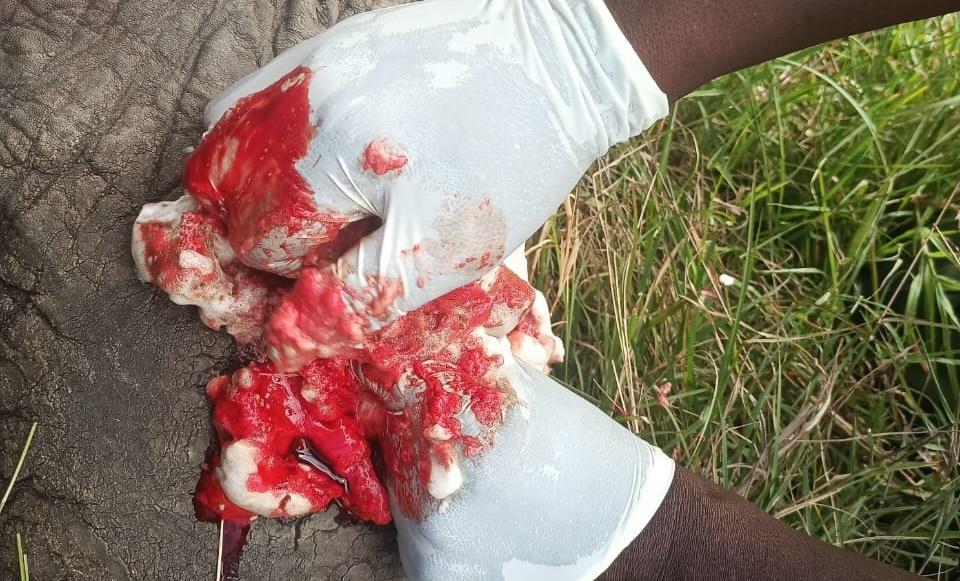
The elephant was darted successfully with 14mgs of Etorphine, it made some efforts to run away but was immobilized in seven minutes and then fell to the ground with the slight help of a rope so as to fall in the right direction.
The spearhead was retrieved, and the wounds were cleaned with water, then cauterized with Hydrogen peroxide and lavaged with povidone Iodine. Topical antibiotic cream and spray was applied. Systemically the elephant was given 30,000mg of Oxytetracycline and 50mgs Dexamethasone, administered intramuscularly.
Prognosis
It was revived using 170mgs Naltrexone into the ear vein and a third of the drug intramuscularly. Prognosis is good.


The Mara Vet attended to a snared male juvenile zebra at Ollaro. The snare was located around the neck and was very tight.
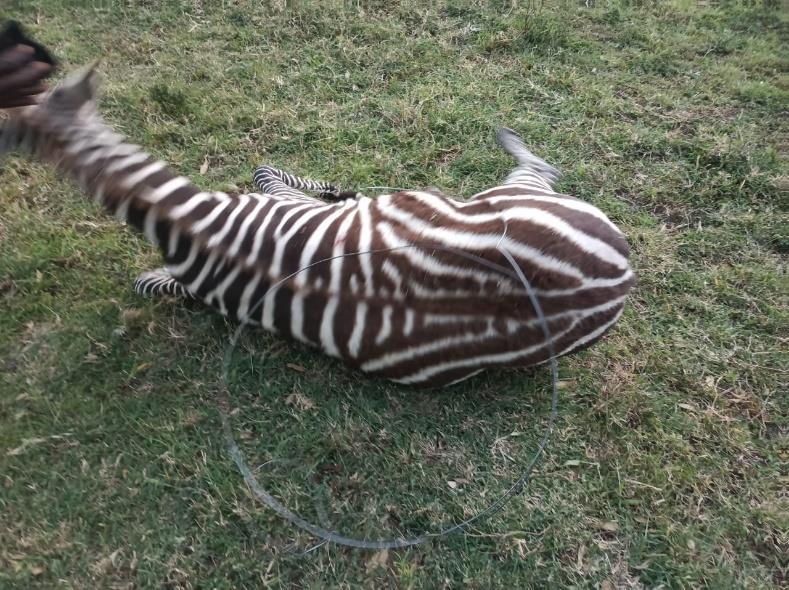

After a long search the animal was found, and a 3mm dart was prepared composing of 6mgs Etorphine and 70mgs Azaperone. The zebra was approached with a vehicle, and it was darted successfully. It was startled and kept walking away for five minutes when it attained standing immobilization and later went down on the left lateral recumbency and blindfolded.
The tight snare had cut through the soft tissues and reached the bone. The snared was lightly pulled and cut. The dead tissue was removed followed by cleaning and disinfection with Hydrogen peroxide, then water and finally Iodine. It was then sprayed topically with Oxytetracycline. The zebra was given 15,000mgs of Amoxicillin antibiotics and 30mgs Dexamethasone anti-inflammatory intramuscularly.
Prognosis
Prognosis is good. .

After the previous case of a snared zebra, the Vet Unit attended an arrowed zebra in the same Conservancy.
Immobilisation, examination and treatment
The zebra was approached with a vehicle and darted with 6mg Etorphine.
The zebra had an arrow wound to the left rump which was cleaned with water and 100ml Hydrogen peroxide and Iodine. It was also given 15,000mg of Amoxicillin and 30mg of Dexamethasone to protect against infection and inflammation.
Prognosis
Prognosis is good.
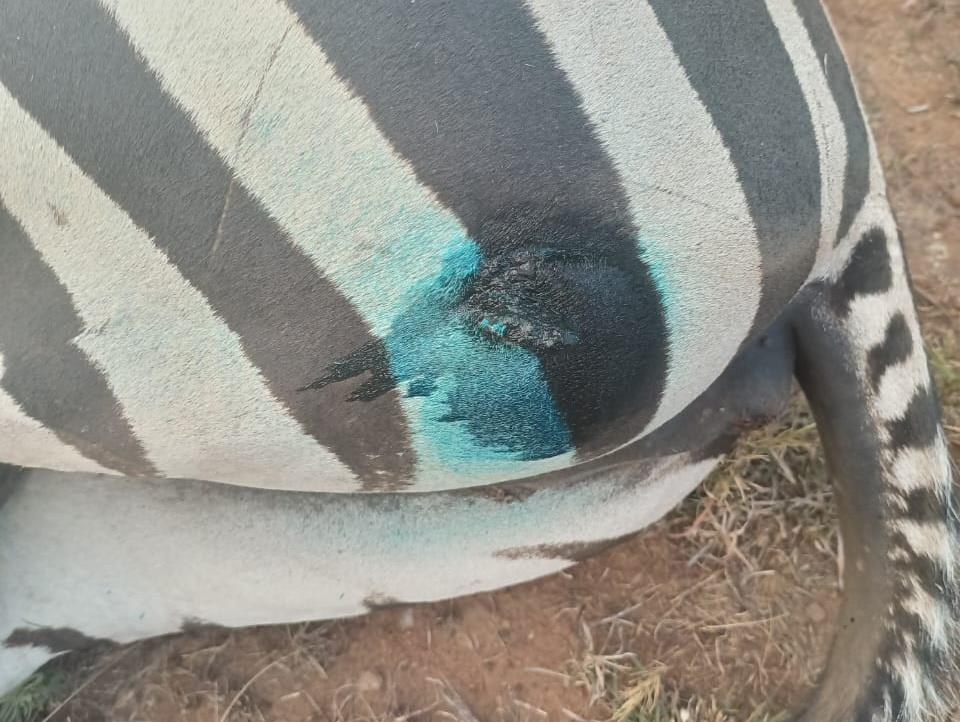
Case 28 – 10th January 2025
Elephant Natural Causes
Masai Mara National Reserve
Mara vet attended to a young male lame elephant with a swollen right forelimb. No physical injury was observed. The elephant had suffered from joint laxation and muscle tear.
Immobilisation, examination and treatment
The elephant was darted successfully with 17mg Etorphine. Both ears were used to cover the left and right eyes shielding it from direct sunlight and dust. Water was doused on the animal to cool him down as the temperatures continued rising.
As there was no physical injury, the vet administered 30,000mg of Oxytetracycline and 60mgs Flunixine meglumine intramuscularly to ease the pain.
Prognosis
Prognosis is good. Monitoring of the elephant will be done by Masai Mara patrol rangers.
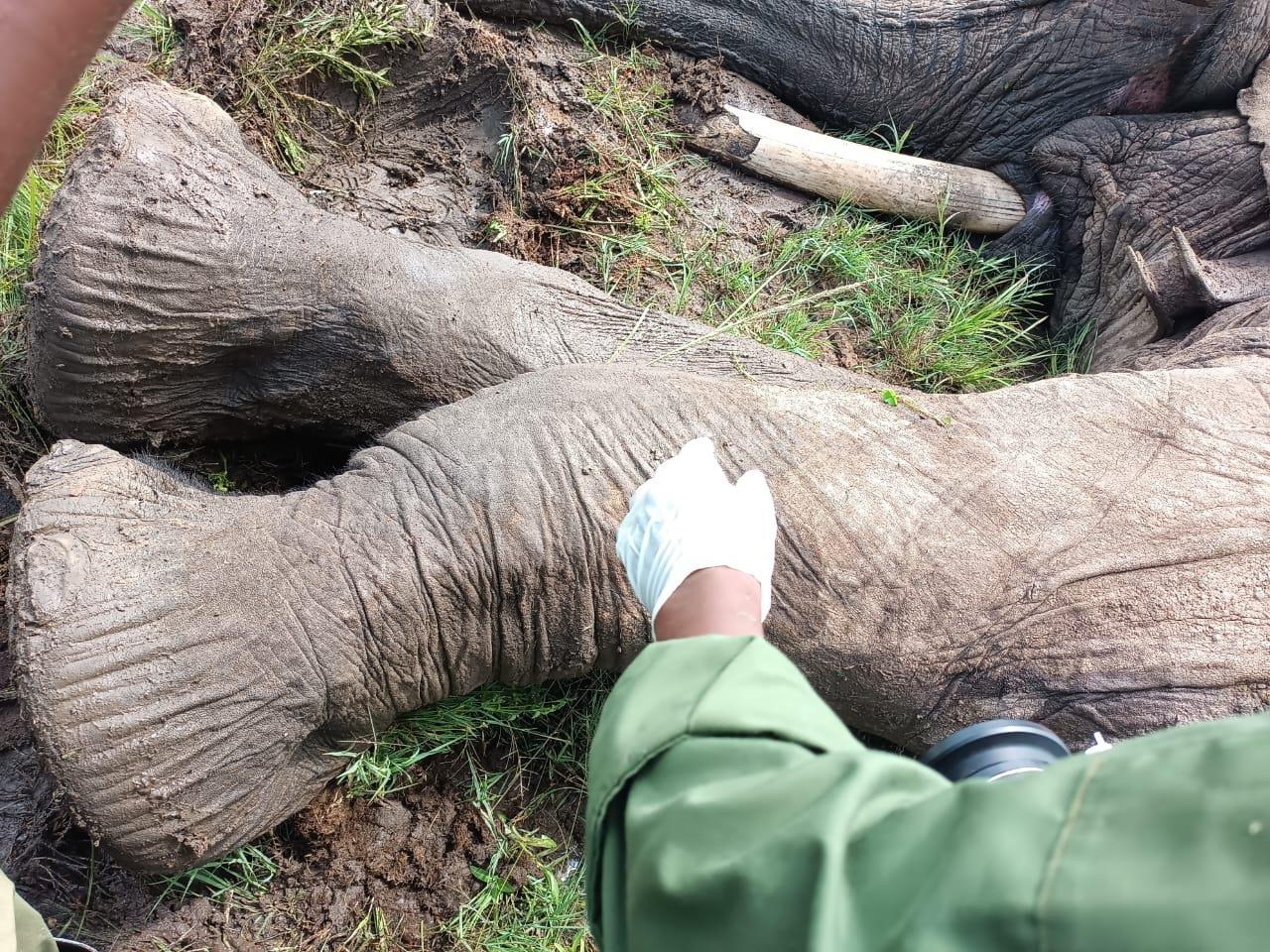
KWS management at Shimba Hills National Park reported an elephant bull that had killed a person and injured others in Nyango, Kinango, Kwale County.
A fixed wing aircraft was used to trace the elephant, while a helicopter assisted in the darting of the elephant. The elephant was located in a thick forest and pushed to an area close to the road to allow loading into the truck. The elephant was forced to an open area and darted with 20mg Etorphine then the helicopter attempted to keep it close to the road.
The elephant had no wounds or any visible physical anomalies. The bull was lifted using a crane and loaded into the transport vehicle. The elephant was transported under sedation and arrived at Shimba Hills National Park with no complications. Due to the distance, the anaesthetic was topped with 5mg Etorphine to reduce trunk mobility.
The elephant was revived using Naltrexone (an antagonist for the immobilisation drug) and favourably woke up after drug administration. The elephant seemed disoriented and moved into the nearby bush and towards the grassland before moving away from the release site.

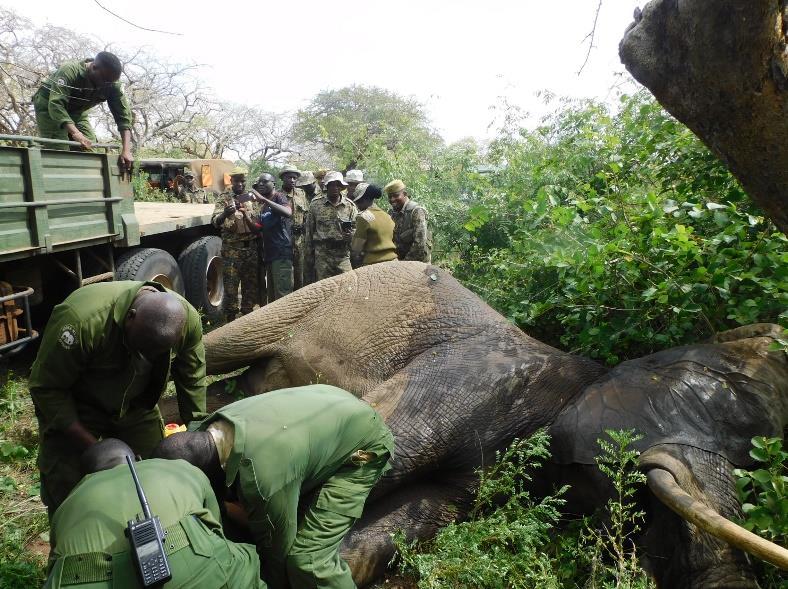
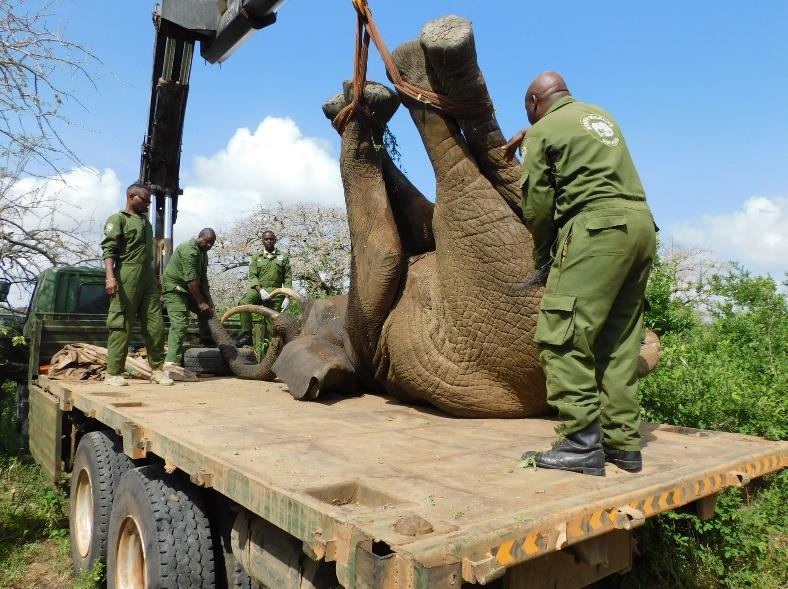

Mara vet attended to a female adult elephant with a deep penetrating arrow wound on the left forelimb at the hock joint. The wound was seriously infected with lots of pus. The limb was also heavily swollen rendering the elephant highly immobile.


Immobilisation, examination and treatment
The elephant was darted with 17mgs Etorphine.
The arrow was retrieved, and the wound was extended for drainage and cleaned with water. The pus was expelled from the capsule, then cauterized with Hydrogen peroxide and lavaged with povidone Iodine. Topical antibiotic cream and spray were also applied. The elephant was given 30,000mg of Oxytetracycline and 50mgs Dexamethasone, administered intramuscularly.
Prognosis
It was revived using 170mgs Naltrexone into the ear vein and a third of the drug intramuscularly. Prognosis is good but monitoring will be continued.
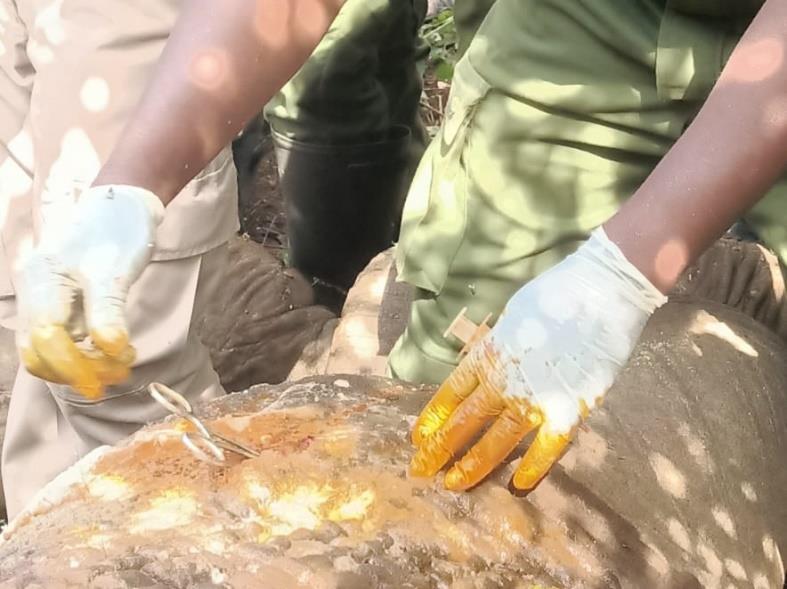
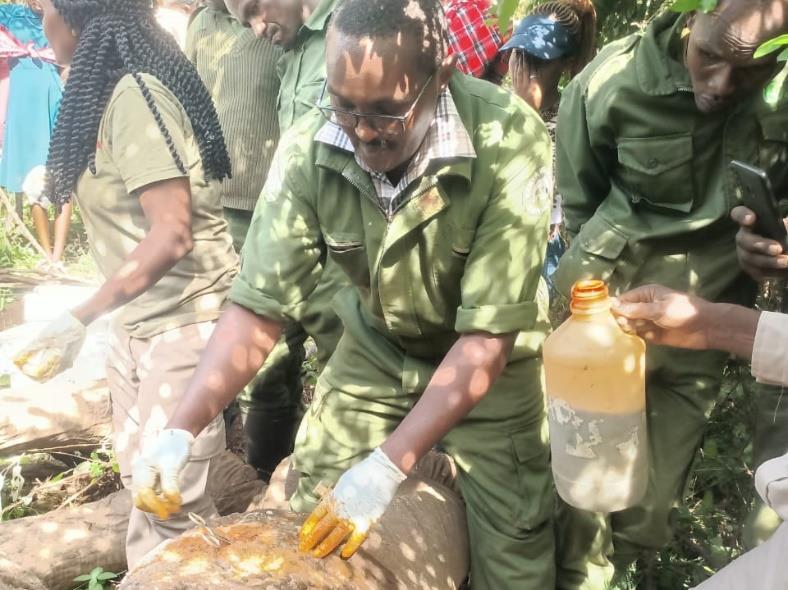
The Assistant Director in charge of the Ecommunity in Voi reported a lion named Brutus to AMVU. The lion had a history of being a habitual livestock predator in the Mbololo area. The lion had a collar and was recently moved from Laikipia due to similar problems with livestock and hence had been identified as a threat. A helicopter assisted in locating the lion using its collar signals. The lion was located in the park and was accessed without difficulty.
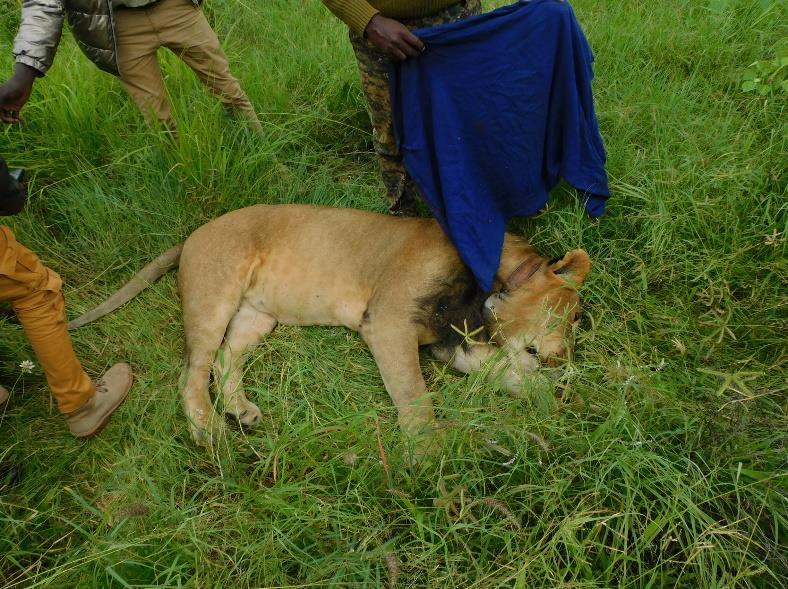
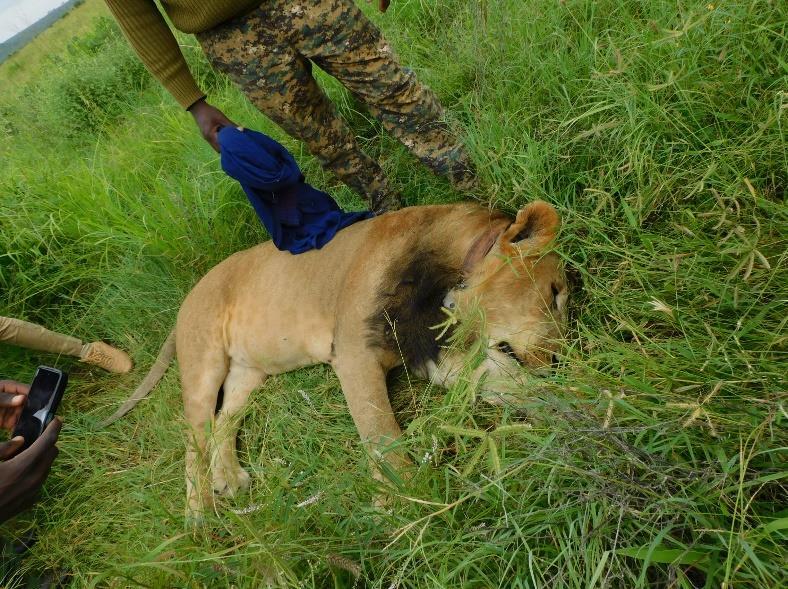
The lion was pushed to an open area and darted with a combination of 300mg of Ketamine HCl and Medetomidine. The lion was fully immobilised in 20 minutes.
The lion was found in good body condition and had no external injuries. Amoxicillin injection was applied to cover for bacterial infection.
The lion was put into a cage and transported into the interior of the park. The lion was revived using Atipamezole (an antagonist for the Medetomidine) and favourably woke up after drug administration. The lion was released inside the park in an area away from the herding communities of Mbololo.

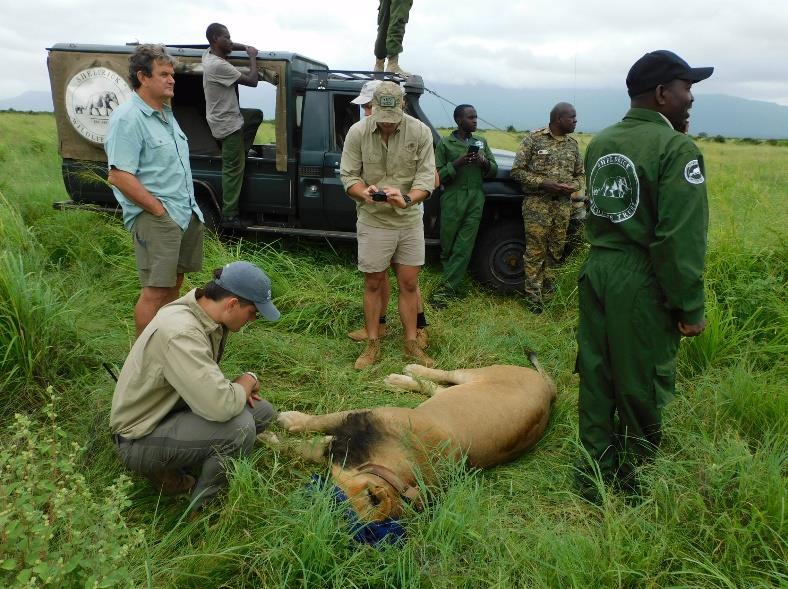
The Unit received reports of an injured elephant near Lake Jipe. The team quickly mobilized and flew to the area Unfortunately, the bull swam into the lake on approach which must have been soothing to his foot but made it too dangerous to anaesthetize him. Over the coming days, the aerial units spent many hours searching for the bull and finally a week later he was seen again and the Vet Unit was airlifted to the area.
Once the team were in the vicinity, the helicopter pushed the elephant onto solid ground, and the vet darted the bull with 18mg Etorphine. Examination revealed that the bull had a deep, penetrating wound near his front ankle. He was originally spotted near a town, which indicates that he had been arrowed or speared during a human-wildlife conflict incident. The wound had become badly infected and was at risk of compromising the ankle. The team cleaned the wound with Hydrogen peroxide and Iodine, packed it with green clay and sprayed it with antibiotic spray. The bull was also administered 30,000mg Oxytetracycline and 50mg Dexamethasone.
Given the severity of the injury, re-treatment may be necessary, and he will be monitored, however his prognosis is good



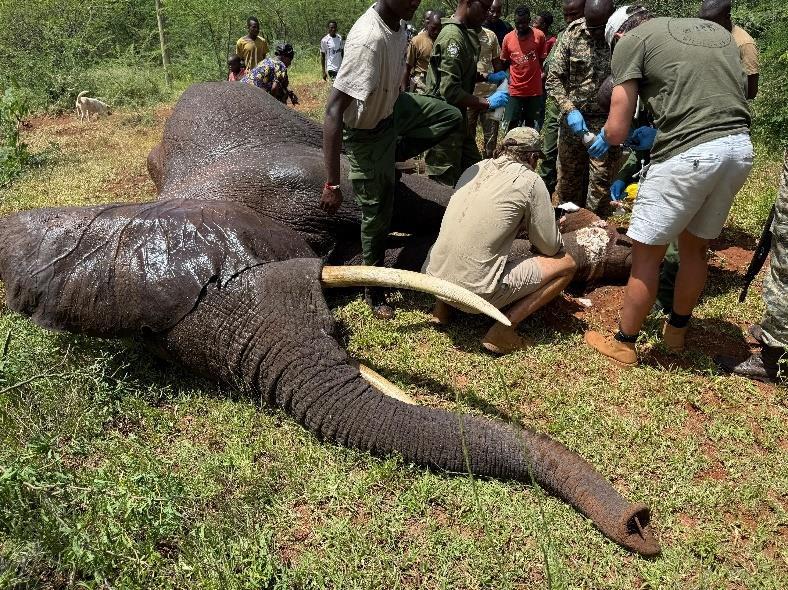
Suiyan Conservancy Rangers reported an adult female elephant with severe lameness, at the Suiyan - Loisaba border The elephant was a lactating mother with two calves (aged approx. 2-3 years and 7-8 years). The vet team arrived on the 16th, but the terrain was difficult and impassable. To ensure the safety of the animals and personnel, the exercise was called off until aerial support was available, and helicopter support was provided the following day.
Immobilisation, examination and treatment
The elephant was darted from a helicopter with a Dan-inject dart loaded with 15mg Etorphine hydrochloride. The vehicle and helicopter were used to separate the cow and her calves and keep them at a safe distance.
The elephant was observed to be in fair body condition but had a significant injury caused by a deep wire snare on the left forelimb. The tightly embedded snare was carefully removed. The wound, which was deep and contaminated, was thoroughly debrided to remove necrotic tissue, ensuring a clean surface for healing. Following debridement, the wound was cleaned using Hydrogen peroxide mixed with water to reduce bacterial contamination and then flushed with Iodine. The elephant was also given 15,000mg Amoxicillin and pain and inflammation was managed using Dexamethason. Catosal was also administered to stimulate metabolism and boost immunity.
The prognosis is favourable Loisaba Conservancy were advised to closely monitor the elephant and provide updates.
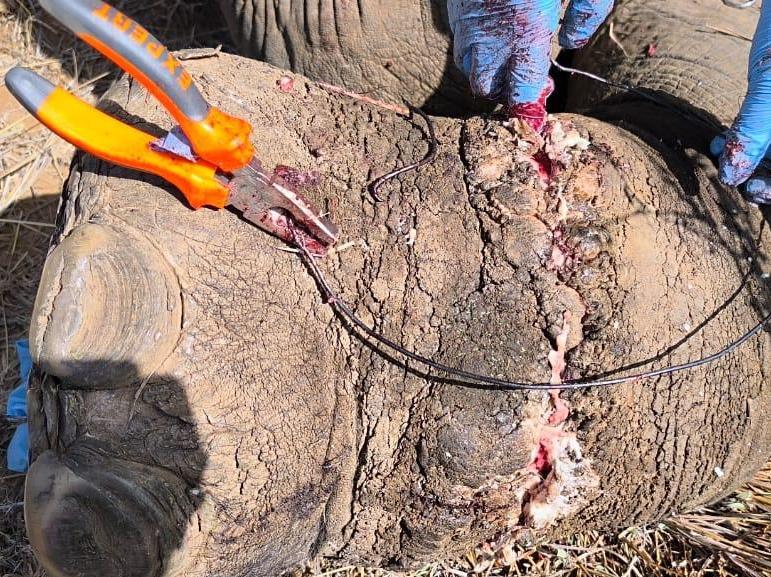

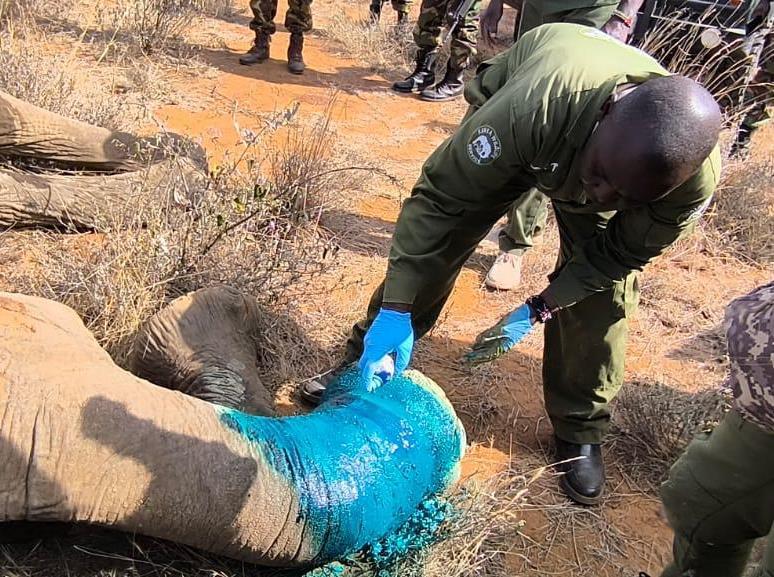

KWS management at Mokowe Station reported a leopard caught in a snare in NYS camp at Bargoni area. The leopard had been observed for a day and would not move even when provoked, which led to the discovery of the snare.


The leopard was successfully immobilized using a combination of 150mg Ketamine HCl and 4mg Medetomidine. The leopard attained full immobilisation in 15 minutes.
The leopard was found in good body condition but had one foot caught in a snare. The right forefoot was normal, but the left forefoot was digit-less due to an old cut on the paw. An Amoxicillin injection was applied to cover the bacterial infection. The leopard was treated with 10ml Amoxicillin and revived using Atipamezole (an antagonist for the Medetomidine). It favourably woke up after drug administration.
The leopard was released at the same spot because the area was composed of thick bushes and away from local communities.
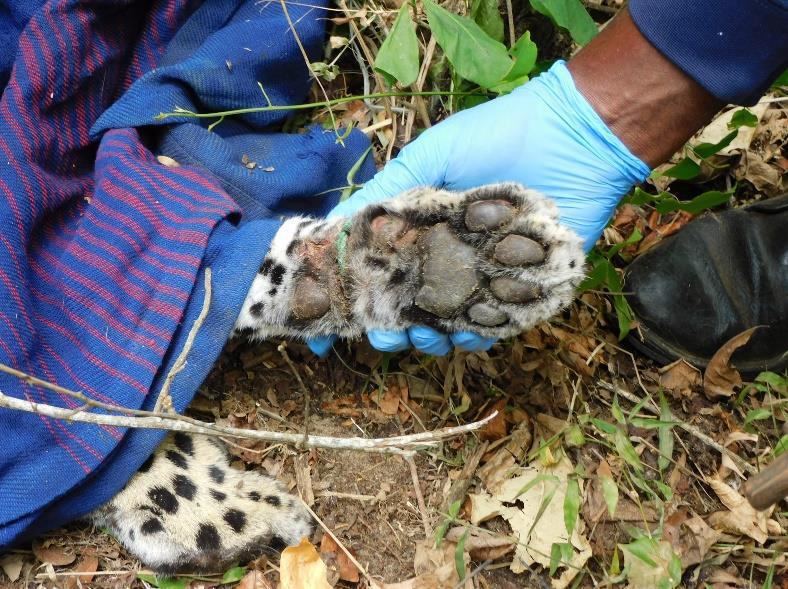

Elephant Arrow
Triangle, Tsavo East
SWT reported an injured elephant to AMVU. A helicopter assisted in darting the elephant, which was located in a Comiphora bush but easily accessed.


Immobilisation, examination and treatment
The elephant was successfully immobilised using 20mg of Etorphine HCl.
The elephant suffered an abdominal injury that was filled with pus. A metal detector was used to trace for metal remains in the wound, but none was found. The wound was irrigated with iodine solution. Amoxicillin injection and Oxytetracycline spray were applied to cover for bacterial infection.
Prognosis
The elephant was revived using Naltrexone (an antagonist for the immobilisation drug) and favourably woke up after drug administration. Prognosis is good.

